An expensive Russian
A while ago I saw in an auction of Raritan stamps, a famous auctioneering firm that has a lot of Russian issues in its programme, from Zemstvos to the independent republics, a block with the motorcycle stamp from 1948 (MFN catalogue no. 5) on offer. Upset price not less than 725,- US$. And despite this looking as an ordinary block.
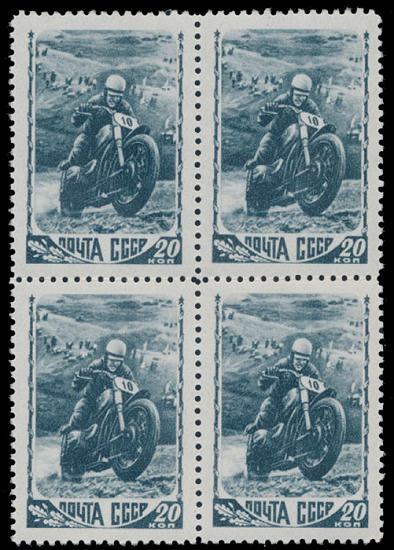
Although erroneous amounts are printed in catalogues more than once, I still was curious and therefore I went back to the site when the auction was finished, to see the result. The lot had been sold for...... the amazing amount of 1050,- US$:
1948, Motorcyclist, 20k slate blue, raster square, reprint of 1955, block of four, full OG, NH, VF and rare printing variety in multiple
Raritan Stamps Inc. Stamp Auction #51
Closing: Dec 2 - Dec 3, 2011
Bid Info: Price: $725.00 Sold For: $1050.00
At that moment my curiousity started to grow, and I decided to search for more information on this item. Realize that philatelists that pay such an amount of money for a few stamps in general know what they are doing.
First I took my friend the Michel catalogue, but there I did not find any clues that justify this exorbitant price. I only learned there that the issue of September 15th was the first of 2 sports issues in that year, and that there are also horizontal pairs of our stamp that are listed for 1000,- euro. Of the motorcross stamp 1 million pieces have been printed for this issue.
In the description in the auction catalogue is spoken about "raster square", so I started to Google on this. Surprisingly this immediately dellivered an offer on Ebay of a stamp with the optical announcement "Raster Square" and KB.
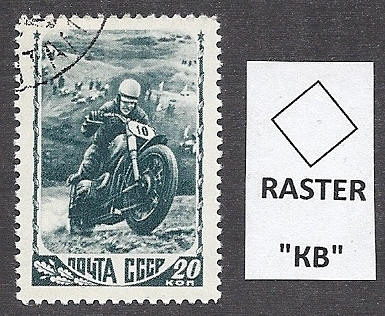
But this one cost less than 10,- US$. But OK, I bought it as research material. The seller could not give me any further information, and the search was continued. On internet there are different sites where phila-Sherlocks like me can look, and I started at Linns.com. Soon I found under the heading "Reprint" an explanation. According to U.P.U. rules stamps that have already been issued may be reprinted, if announced to the U.P.U. and if they have some significant difference compared to the original issue. And as example the stamps from the Sovjet period are mentioned, in which the raster form differed from the originals. As explanation for the reprint another Sherlock-site, of Joseph Luft, writes that the demand for stamps from that period had grown so much that there was a big shortage of them. Therefore reprints were made of many stamps by the original printer, the Sovjet state printer Goznak (Гознак in Russian, an abbreviation of Государственный знак, Gosoedarstvenny znak, or the National Mint).
Okay, okay, all very well, but what about the high price in that auction? I searched much deeper and wrote to several clubs of Russia collectors. One of this clubs is "Die Arbeitsgemeinschaft Russland/UdSSR e.V.". It appeared that the chairman of this club, Jörg Bochmann, has written a book called "Die Erst-, Nach- und Neuauflagen der UdSSR von 1945 bis 1957" and after exchanging some letters he gave me the information that explains the high price in the auction.
Goznak had to implement the changes as required by the U.P.U. and chose to make the rasters on the printing dyes in another angle. Rasters are the lines that form the small dimples in the dye which hold the ink to be printed until it is transferred onto the paper. Our stamp originally had been printed with a parallelogram
raster and was now reprinted with a square raster.
In the image on the right the raster from the original 1948 stamp:

Left the raster of the reprint from 1956, right the raster of the original from 1948
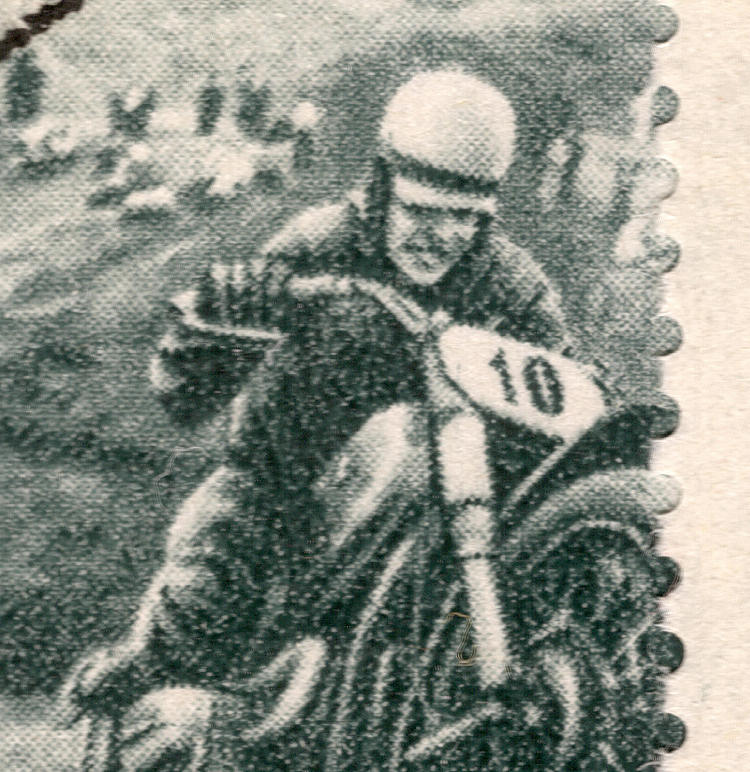
The reprint from 1956 with square raster
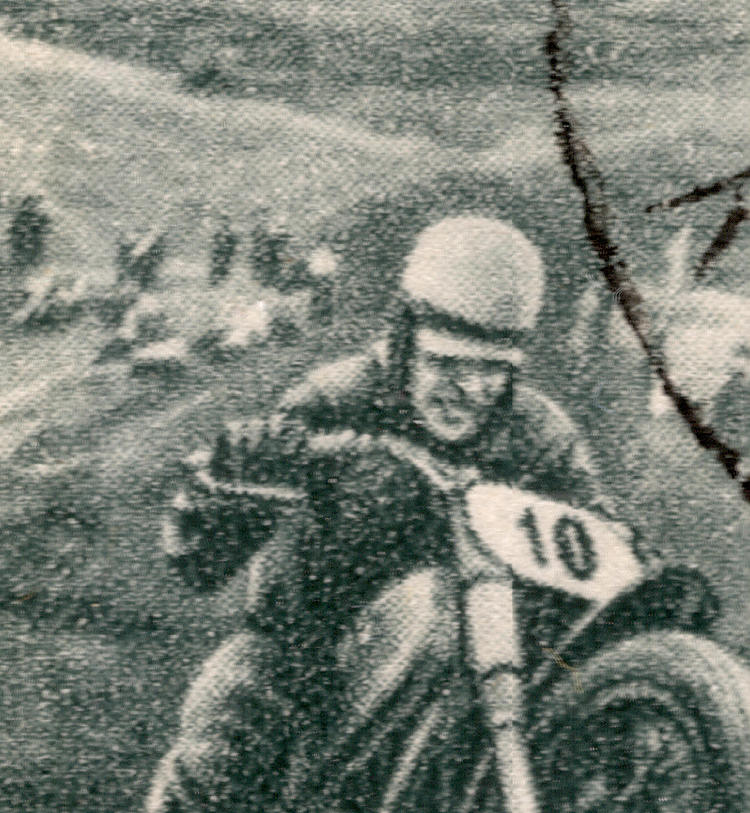
The original from 1948
Also the printing size was changed. The 1948 edition measured 22,0 to 33,5 mm, the reprint 21,5 to 32,5 mm. Further the 0 in the competitors number was thick and round in the 1948 issue, and thinner on the reprint.
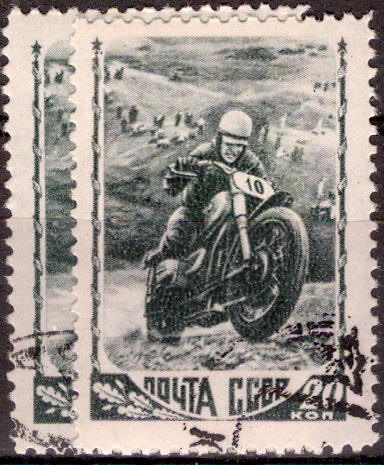
Left/background the original, right/foreground the smaller reprint
Supply determines the value, and that is what explains the high price. The auction catalogue speaks about a reprint from 1955. In 1955 a small edition has been printed on white paper as test for the final reprint of the 1948 stamp. In 1956 the big edition of the final reprint has been made on the same "yellowish-grayish" stamp paper as the 1948 stamps. Unfortunately there are no amounts known of the different reprints, as they were only intended for collectors, but it may be clear that the 1955 type is rare.
Only the last few years collectors distinguish between the originals and the reprints. I do not understand why so much money is now payed for reprints, but scarcity explains the rarity.
Summarizing for the "treasure hunters" amongst us: The expensive reprint is the one with an imprint of 21,5 to 32,5 mm and a thin zero, of which the paper lightens nicely bright white under a UV-lamp.
With special thanks to Jörg Bochmann.
Hans de Kloet
Top - Back to former page - Home |





